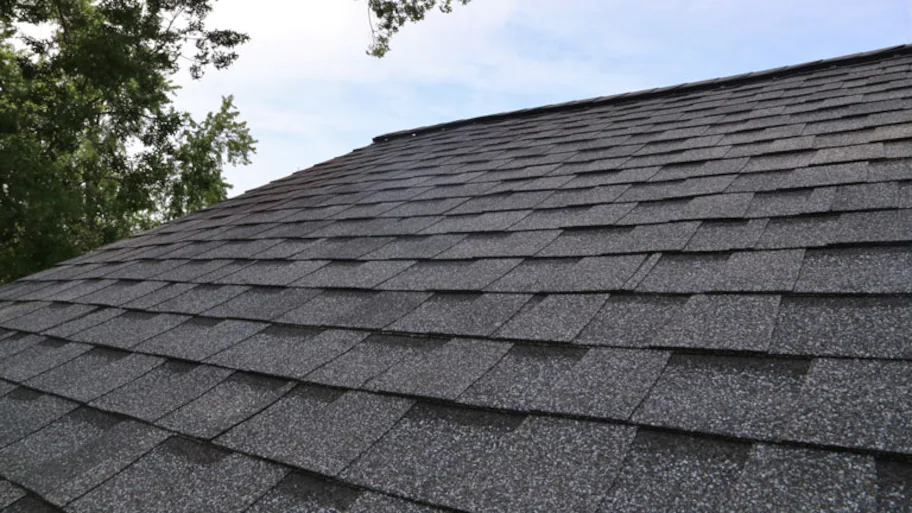Reviewing the Providers Supplied by Roofing Companies in Gainesville Florida
Reviewing the Providers Supplied by Roofing Companies in Gainesville Florida
Blog Article
Best Practices for Ensuring Appropriate Roofing Air Flow
A balanced intake and exhaust vent ratio, commonly 1:300, plays an essential role, with intake vents preferably placed at the lower edge of the roofing system for great air access and exhaust vents at the optimal for cozy air departure. Maintaining insulation away from vents is critical to stop air flow constraint.
Understand Air Flow Basics
Properly understanding air flow essentials is vital for guaranteeing the longevity and effectiveness of roof systems. Efficient ventilation alleviates moisture build-up and temperature level extremes in the attic, both of which can lead to significant structural damages with time. A well-ventilated roof helps in avoiding usual problems such as mold growth, timber rot, and ice dams, which can endanger the integrity of the roof covering products and the underlying frameworks.
The key objective of air flow is to help with the activity of air, permitting for a regular exchange in between the exterior and indoor settings. This equilibrium is attained with a mix of consumption and exhaust vents that collaborate to preserve optimum airflow. Consumption vents, normally situated along the soffits or eaves, allow fresh air to get in the attic room, while exhaust vents, usually located at or near the roof covering ridge, make it possible for hot, damp air to get away.
Key factors influencing the effectiveness of roof covering air flow include correct positioning, ample sizing, and making sure that both consumption and exhaust vents are unhampered. Regular assessment and upkeep are critical to identify prospective clogs, damages, or inadequacies in the ventilation system, thereby protecting the roof's efficiency and longevity.
Kinds Of Roofing System Vents
Roofing system vents play a crucial duty in keeping effective attic ventilation and, by expansion, the general health of the roof. Numerous kinds of roofing system vents are readily available, each with distinct benefits customized to details roofing needs. Ridge vents, for instance, are mounted along the roofing system's peak, permitting cozy, damp air to run away from the attic room. They use continuous ventilation and blend seamlessly with the roofline, making them both efficient and aesthetically pleasing.

Soffit vents are mounted under the eaves and job in tandem with roof vents to ensure a well balanced intake and exhaust system. By permitting cooler air to enter from below, soffit vents help with the expulsion of hot air via upper vents. Gable vents, located on the exterior wall surfaces of the attic, offer one more effective service, specifically in homes with saddleback roofs.
Examine Your Current Ventilation

Following, consider the age and problem of your roof covering materials and air flow parts. Older systems may not follow current building regulations or may have worn away gradually, decreasing their efficiency. Conduct an extensive exam to determine any indicators of deterioration, such as corrosion, damages, or gaps that can jeopardize the system's performance.
Furthermore, measure the attic room temperature level and humidity levels. High temperatures and moisture can show inadequate air flow - roofing companies in gainesville florida. Utilize a hygrometer and thermometer to obtain accurate readings, contrasting them with outdoor conditions. Persistent inconsistencies suggest prospective problems that require dealing with.
Installation Best Practices
Effective installment of roof ventilation systems is critical for guaranteeing optimal efficiency and long life. Proper setup starts with understanding the certain ventilation demands of the building and the roof covering it covers. This includes determining the proper ratio of consumption to tire vents, commonly sticking to the 1:300 policy, which specifies one square foot of air flow for each 300 square feet of attic floor room.

Consumption vents should be installed at the roof covering's lower side, often in the soffits, to enable cool air to go into. Exhaust vents, on the various other hand, need to be mounted near or at the roofing system's peak to help with the exit of warm, wet air.
Seal all air vent links carefully to avoid air leakages and potential water infiltration. Use premium materials and comply with supplier standards to make sure longevity and performance. Furthermore, incorporating ridge vents with baffles can substantially boost airflow efficiency by preventing wind-driven rainfall and snow from entering the attic.
Eventually, precise setup of roofing ventilation systems mitigates potential Discover More Here issues such as mold and mildew development, ice dams, and structural damage, guaranteeing the roofing system's stability and the structure's general health and wellness.
Normal Maintenance Tips
Uniformity in upkeep techniques is basic to ensuring the lasting effectiveness of roofing air flow systems. Routine evaluations are critical, preferably done biannually-- in the springtime and autumn. During these examinations, guarantee that vents are devoid of debris, nests, and other obstructions that can restrain airflow. Examine for any type of indicators of moisture build-up or mold, as these can suggest improper ventilation or leakages (roofing companies).
Use a soft brush or a vacuum cleaner to get rid of dust and debris from intake and exhaust vents. Be careful not to damage the vent displays or louvers during the process.
Correct insulation is similarly important. Guarantee that attic room insulation does not block the vents, as this can significantly limit airflow. Reposition or replace it to maintain a reliable obstacle. if any type of insulation has shifted or settled.
Finally, change any damaged or missing parts quickly. Damaged vents, broken tiles, or shabby flashing can all add to insufficient air flow and must be resolved without delay. Normal maintenance makes certain that the roof air flow system functions efficiently, thus expanding the lifespan of the roof itself.
Verdict
Making certain proper roof air flow is vital for preserving the efficiency and resilience of a roof covering system. Adherence to the 1:300 intake and exhaust vent ratio, combined with the calculated positioning of vents, is necessary. Regular semiannual examinations, go to this web-site particles cleansing, and ensuring insulation does not obstruct air flow are crucial techniques. Executing these finest methods will certainly foster a well-ventilated roof, therefore minimizing potential issues connected to moisture build-up and excessive heat, inevitably lengthening the roof covering's life expectancy.
A balanced intake and exhaust vent ratio, frequently 1:300, plays a pivotal function, with consumption vents preferably put at the reduced edge of the roof for awesome air entry and exhaust vents at the height for warm air departure. Consumption vents, typically located along the eaves or soffits, enable fresh air to enter the attic room area, while exhaust vents, typically positioned at or near the roof covering ridge, make it possible for warm, moist air to leave.
Soffit vents are mounted under the eaves and work in tandem with roofing system vents to ensure a balanced consumption and exhaust system. By permitting cooler air to go into from below, soffit vents assist in the expulsion of hot air through upper vents. Adherence to find out here the 1:300 intake and exhaust air vent proportion, coupled with the strategic positioning of vents, is essential.
Report this page